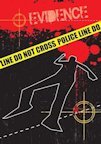When a serious scholar like Philip Cook publishes research on gun violence, the pro-gun community usually ignores what he has to say. This is because Professor Cook has been publishing important work on the risks of guns for nearly forty years, and the folks who don’t believe that guns are a risk would rather pretend he doesn’t exist. Which is why I found it interesting that his latest work on how criminals get their guns has made the headlines in the pro-gun media, from the NRA to the National Review.
The pro-gun headlines, however, tell a much different story than the one we get from Phil Cook. Because what Cook and his research colleagues were trying to find out was information about the operation of the ‘informal’ gun network; i.e., gun transfers which occur outside of the regulatory environment that defines initial gun transfers between customers and FFLs. And since only 10% of the guns acquired by the survey respondents came directly from legal sources, the whole point of this research was to illuminate the shadowy and unmapped world of illegal guns. Or to be more precise, how guns were acquired by people who were then arrested for using or carrying them in illegal ways. Incidentally, this article appears in the special Preventive Medicine issue on gun violence edited by Daniel Webster and David Hemenway whose lead editorial I discussed last week.
The pro-gun noisemakers are falling over each other telling their followers that this article justifies their opposition to every gun regulation of any kind, because the criminals themselves admit that only 10% of the guns they use come through legal channels to them. So what’s the point, for example, of expanding background checks to secondary transfers if gun-toting criminals get all the guns they want without undergoing a background check at all? To quote the geniuses at the NRA: “Since these criminals do not use gun stores, gun shows, or even legal private gun sellers, there is no point in the criminal supply chain where a background check would make any difference whatsoever.”
The NRA’s been peddling this crap since they lost the battle to prevent NICS background checks in 1994. Here’s the organization’s official statement on the issue: “NRA opposes expanding background check systems at the federal or state level. Studies by the federal government show that people sent to state prison because of gun crimes typically get guns through theft, on the black market, or from family members or friends, and nearly half of illegally trafficked firearms originate with straw purchasers—people who can pass background checks, who buy guns for criminals on the sly. No amount of background checks can stop these criminals.” And guess what? Now they have the esteemed gun researcher Phil Cook validating the NRA point of view!
Except that’s not the point of Phil’s research at all. To the contrary, the article contains a very interesting graphic (Page 30) along with excerpts from respondent interviews which illustrate the degree to which nearly all the guns acquired by inmates passed through multiple hands following the initial, legal transaction that took place in an FFL’s store. And even though the lack of NICS checks over secondary (or tertiary or quaternary or quinary) transactions was the rule for guns by themselves of their friends, few of the jailed inmates interviewed in this study had any idea of exactly how or when their guns first disappeared from lawful commerce and ended up in the mean streets.
What makes this article so powerful and compelling is that it’s not based on data so much as on the words of gun-carrying criminals themselves. The fact that again and again inmates mentioned their fears of getting caught with a gun validates the notion that gun regulations work. The respondents in this study clearly understood that giving them a gun was putting it in the ‘wrong hands.’ In that respect, the felons in Cook County Jail are way out in front of the NRA.






Recent Comments